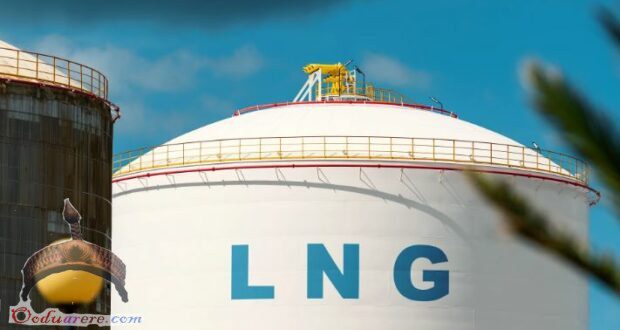The global liquefied natural gas (LNG) market is now driven by the security of supply which is heavily reliant on long-term contracts and not spot market supplies.
This is according to the International Gas Union (IGU). In its latest World LNG report, the IGU noted that the energy crisis has put the security of supply back on the agenda, driving increased appetite for long-term LNG contracts in contrast to relying on spot market supply.
The report also stated that in 2022, over 70 metric tonnes (MT) of LNG contracts were concluded, more than double the average over the last five years.
Meanwhile, in the same year, 90% of LNG contracts concluded had a duration over 15 years in length, with 65% over 20 years in length, signalling a long-term commitment to LNG from buyers.
Recall that just last month, China National Petroleum Corporation (CNPC), signed a 27-year LNG purchase agreement for 4 million tons annually with QatarEnergy.
Supply will begin in 2026 and CNPC will take a 5% equity stake in a production train at Qatar’s North Field East expansion project.
So, monitoring LNG contracting activity is key to assessing upcoming LNG project approvals.
Major off-takers
According to the IGU report, a review of the LNG deals signed in 2022 showed that Asian markets driven by China and LNG aggregators dominated as off-takers with US exporters dominating as sellers.
According to the report, aggregators play an important role as they support LNG project development by building up global LNG portfolios which in turn generate future LNG demand through increased availability of supplies.
This is particularly important when building new markets for LNG imports which may not yet be ready to commit to gas and LNG through long-term contracts.
The report also highlighted Europe as a major off-taker, putting a stop to Russian gas supplies because of the ongoing Russia-Ukraine war.
A part of the report stated:
- “Since the start of the Russia-Ukraine conflict, LNG demand has spiked as Europe has slashed its import of Russian pipeline gas. In combination with a shift in LNG demand, this has created a double whammy for global LNG balances, increasing the need for new LNG supplies.”
What you should know
The IGU report notes that there were deliveries of 27 vessels in 2022 and 11 in the first four months of 2023. So, the global LNG carrier fleet consisted of 668 active vessels as of the end of April 2023.
- These include 45 operational floating storage regasification units (FSRUs) and eight floating storage units (FSUs). This represents a 4% growth in the fleet size from 2021 to 2022, comparable to a 2.7% growth in the number of LNG voyages.
- The key impact of the energy crisis was the combination of the unprecedented surge in prices and volatility with the similarly unprecedented shift in inter-regional LNG trade patterns. Europe provided higher price premiums than the rest of the world to attract additional LNG cargoes.
- Meanwhile, the share of spot trades to China fell to about 10%, from the usual level of 40%.
 Ọmọ Oòduà Naija Gist | News From Nigeria | Entertainment gist Nigeria|Networking|News.. Visit for Nigeria breaking news , Nigerian Movies , Naija music , Jobs In Nigeria , Naija News , Nollywood, Gist and more
Ọmọ Oòduà Naija Gist | News From Nigeria | Entertainment gist Nigeria|Networking|News.. Visit for Nigeria breaking news , Nigerian Movies , Naija music , Jobs In Nigeria , Naija News , Nollywood, Gist and more








